The C Major triad is one of the most popular chords in Western music. In this article you’ll learn how to construct the C major triad as well as how to play it on piano and guitar.
As a music teacher with over 12 years experience, I know that having a good understanding of triads gives students a solid foundation to work with chords and chord progressions.
Root , 3rd and 5th
The C Major triad is formed of the 1st, 3rd and 5th of the C major scale.
- 1st – C (root note)
- 3rd – E (major 3rd above root)
- 5th – G (perfect 5th above root)
Below is the C major triad shown in the treble and bass clef.


Intervals are vital for understanding how triads are built. Check out our guide to guide to major, minor and perfect intervals for more on this.
C Major Triad on Piano
Below you can see how to play a C maj triad on the keyboard or piano. This pattern of notes could also be played starting on any C note.
However, the order of the notes must be the same, with C being the lowest note, followed by E and the highest note being G. This is called ‘root position’.
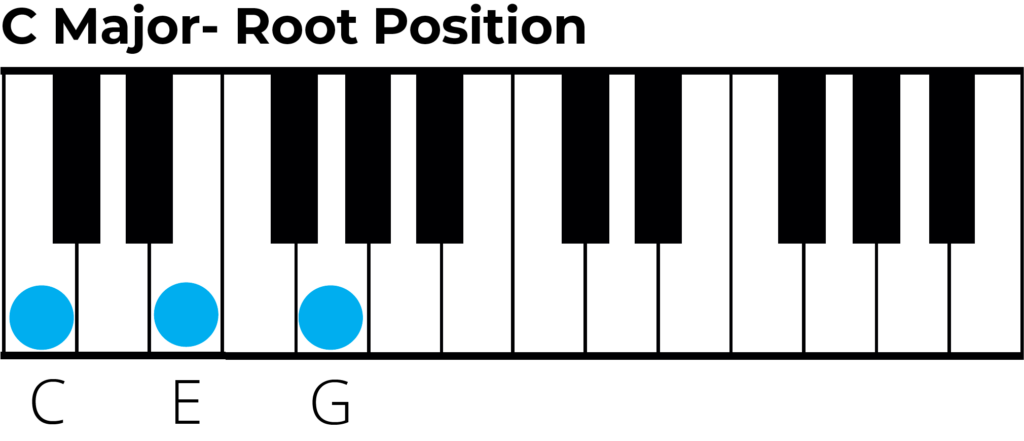
C Maj Triad on Guitar
There are two simple positions that you can use to play a C major chord on guitar (in the root position). Both positions can also be slide up or down the neck to play different major triads.
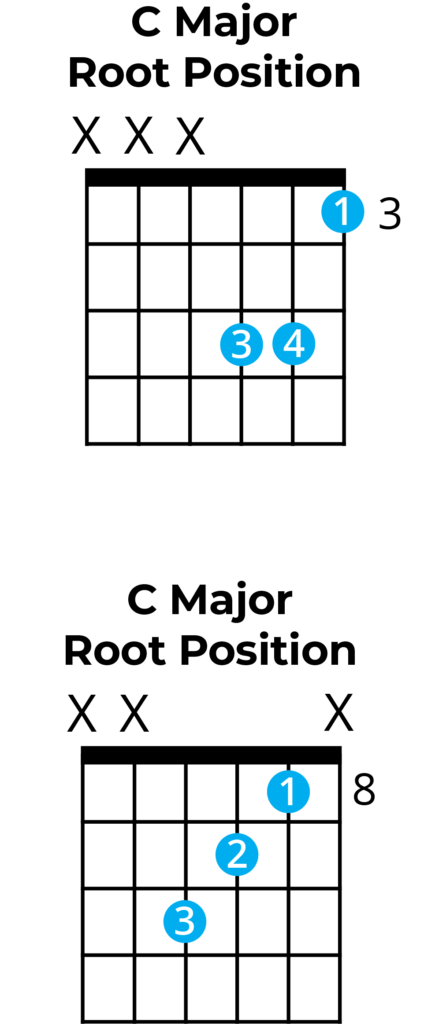
1st Inversion
A 1st inversion is where we take a triad, but start on the 2nd note, which in this case is E natural. We still keep the G above, but then the C (or root) become the highest note.
C major triad 1st inversion:
- E
- G
- C
We can construct a 1st inversion starting on an E note in any octave. The only thing that must stay the same is that the we use the G above and the C above that.

1st inversion on Piano
On the piano we can play the 1st inversion of a C Maj triad by starting on an E natural. They play the G above and the C above this.
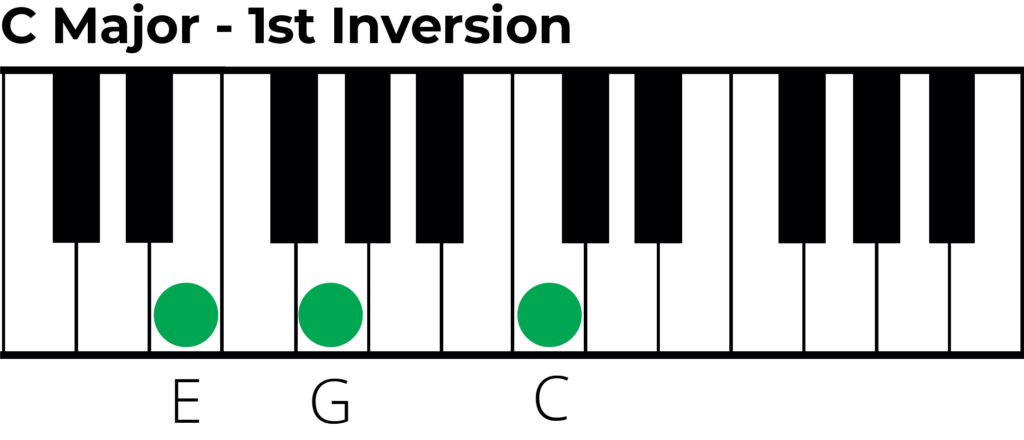
1st Inversion on Guitar
Below are the most common shapes for playing a C major chord in the 1st inversion. Remember that we can only use certain shapes are the pitches of the three notes are important.
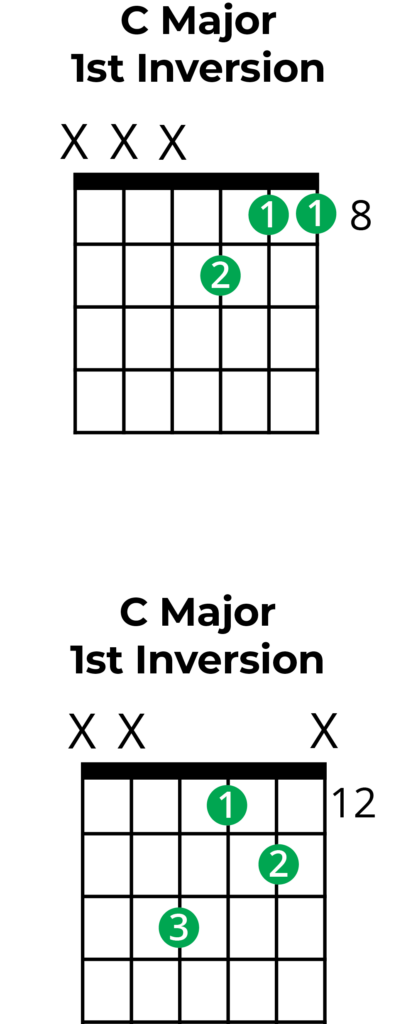
2nd Inversion
A 2nd inversion is where we take a triad but we start on the third note, which in this case is G natural. We still keep the C above then the E becomes the highest note in the chord.
- G – perfect 5th (lowest note)
- C – root note (middle note)
- E – major 3rd (highest note)
We could construct a 2nd inversion starting on any G note in any octave. The only thing that must stay the same is that the we use the C above and the E above that.

2nd inversion on Piano
On the piano we can play the 2nd inversion of a C Maj triad by starting on a G natural. They play the C above and the E above this.
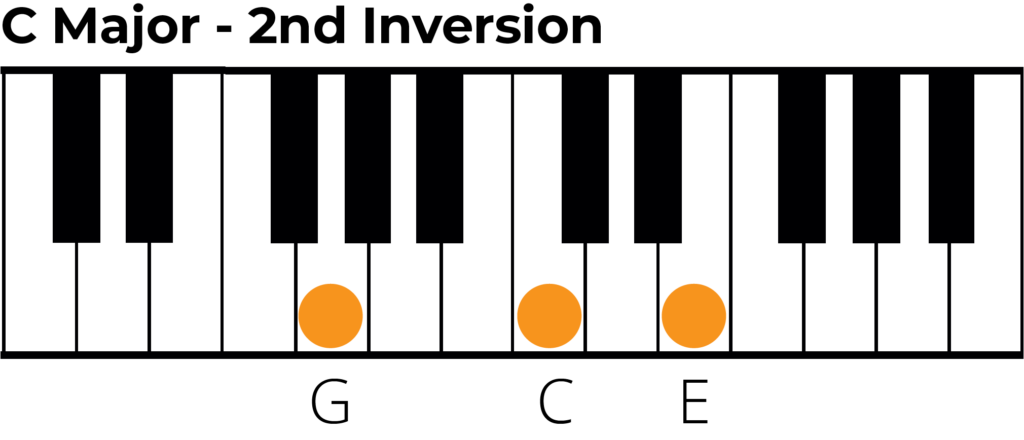
2nd Inversion on Guitar
Below are the most common shapes for playing a C major chord in the 2nd inversion.
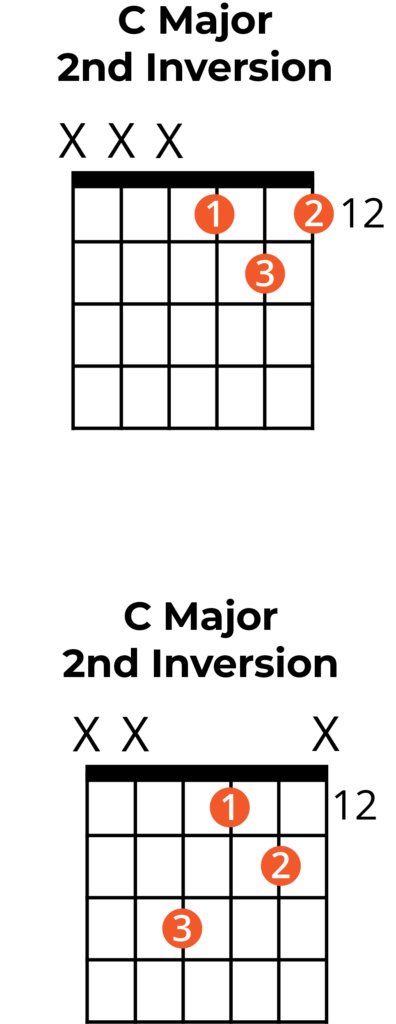
Triads from the C Major Scale
By looking at the C Major scale we can actually make triads built on each note and only using notes from C major. Below you can see a list of each triad we will create be starting on different notes of the scale.
- C Major
- D Minor
- E Minor
- F Major
- G Major
- A Minor
- B Diminished

Famous Songs in C Major
Here’s 3 famous examples of songs in a C Major key. For this reason, they use C Major triads, as the root note chord, priminently in their chord progressions.
‘Let It Be’ – The Beatles
The song is in C Major and starts off on a C major triad.
‘Imagine’ – John Lennon
The song start with a C major chord and is in the key of C Major as well.
‘Wake Me Up Before You Go Go’ – Wham
The song is in the key of C Major and even starts on a C7 chord, which includes the C major triad.
Figured Bass Notation
Figured bass is an alternative way of labelling chords. It uses vertical numbers to denote chords and it can be used to label any type of triad. Below are the figured bass symbols for the C Major chord in all three inversions.
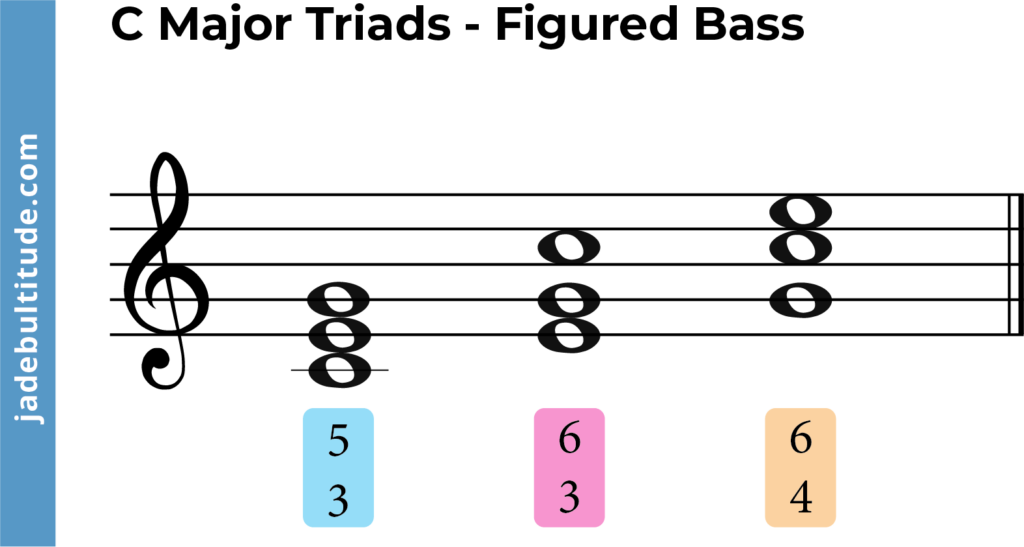
- Root Position – 3/5 indicates that a 3rd above the root and a 5th above the root are to be played.
- 1st Inversion – 3/6 indicates that a 3rd and 6th should be played above the root note
- 2nd inversion – 4/6 indicates that a 4th and 6th above the root note should be played.
There are also figured bass symbols for minor, diminished and augmented triads. A summary is below, but if you want a deepen explanation of how to use this notation, check out our complete guide to figured bass.
What’s next….?
- Learn how to construct the C Minor triad
- Swat up on your chord knowledge with our complete guide to chords.
